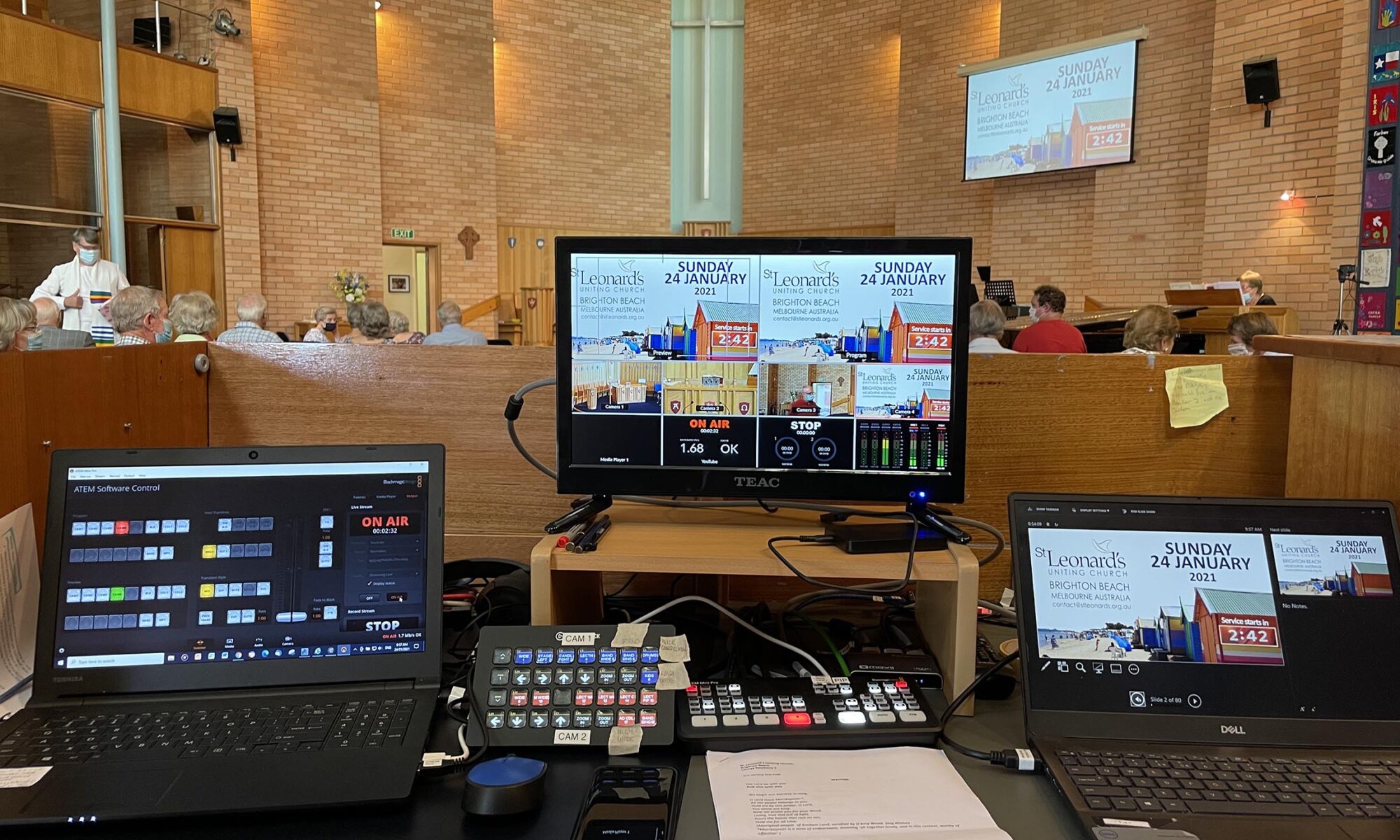Many congregations in my patch, the Port Phillip East Presbytery in Melbourne, are having a go at running online versions of their worship services for the benefit of members staying at home during the Australian response to the COVID-19 pandemic. It’s a time of creativity, with lots of learning through experimentation. I’ve put together a few tips for online worship, relating to YouTube, Facebook, Vimeo, Churchonline and Zoom media channels. “It’s Church, but not as we know it”, is a reference to a meme that emerged from Startrek’s Mr Spock in conversation with Captain Kirk of the USS Enterprise. Moving to a new medium, with up to five people in the room with a camera, means that we have freedom to rethink how we gather dispersed people in a worship experience.
1. KISS principle. Keep it simple. We don’t need to do everything we’d normally do in a typical hour-long or worship service. We can drop the notices, the offering, and, maybe a lot of the singing.
2. Keep the camera/phone close up as possible to the people presenting, using landscape rather than portrait mode. People mae be watching on a television, on a computer screen or on a tablet or smartphone. Sure, there’s a desire to have a sense of being “in the building” but it’s not good screen time.
3. Think about the intimacy that you can have talking to a camera. It’s different to addressing a crowd in a large building. You’re entering people’s living rooms. The register (level of formality) in a living room is usually one of conversation. At times there will need to be more formal elements, as in an address from the Prime Minister. But generally we’re better to use News Breakfast as a guide.
4. Keep the segments of the experience as short as you can. It is hard enough to keep people focused on a 15-20 minute sermon. But on a screen it’s much harder to stay focused. You could break a sermon into smaller sections.
5. Treat congregational singing with caution. We tend to be more forgiving of amateur singing when we’re in the room together. But on a screen, with only one, two or three people singing, we’re more sensitive. Some congregations are pre-recording their songs, which potentially provides for a higher quality experience. If you’re using Zoom meetings, it is very difficult to have everyone singing at once. You’re better off having one singer and everyone else with microphones turned off. Or not singing at all.
6. Consider the option of moving away from a weekly routine. You can offer people other options in alternate weeks, such as using non-screen experiences in their homes.
7. Consider the option of collaborating with people from other congregations, including churches from other denominations, bringing the skills and energy together, and allowing for a breather.
8. Have a person or two looking after the feedback features of your chosen medium – responding to “chat” while it’s happening.


